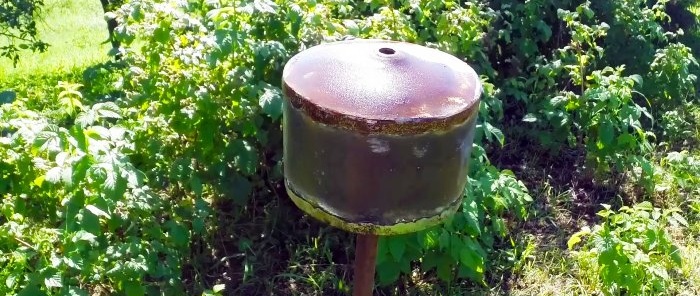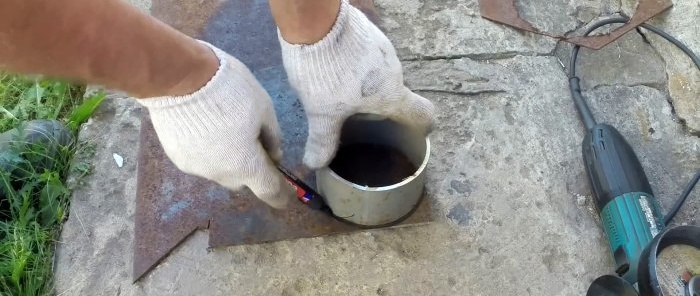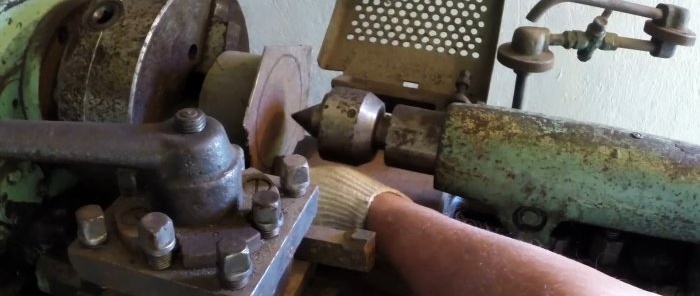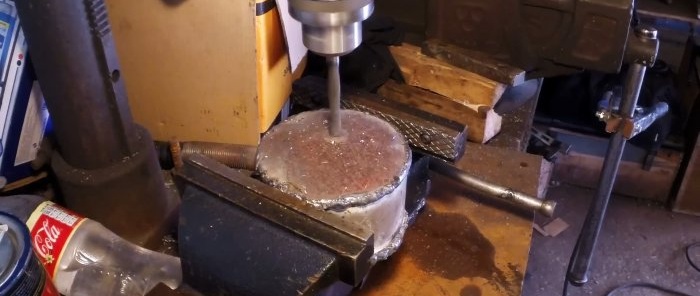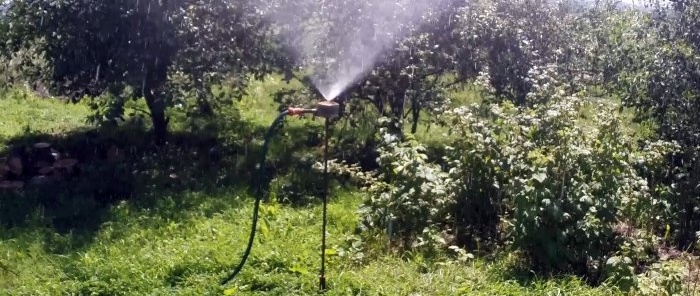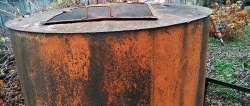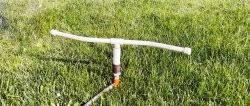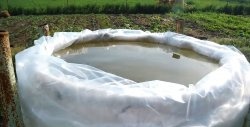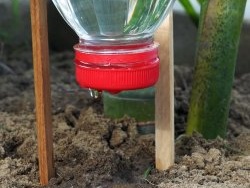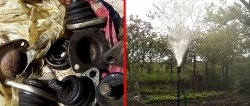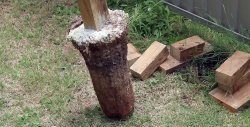In the summer heat, plants in the country or even the grass on the lawn near the house quickly burn out without regular and sufficient watering. Let's look at how to organize it without wasting water and at the same time protecting plants from burning out under the scorching rays of the sun.
This will be a fairly simple but effective sprinkler system, the operating principle of which is based on the generation of rotational energy of water in a container if it is supplied under some pressure tangentially to the inner wall of a bucket or barrel.
Making a simple and very reliable sprinkler for irrigation
Using a grinder, we cut a ring approximately 50 mm wide from a steel pipe with a diameter of about 100 mm. We cut out 2 circles from sheet metal, the diameter of which coincides with the outer diameter of our ring.
On a lathe, we turn one circle into a small cone, in the center of which we drill a hole with a diameter of about 8 mm. We weld the flat circle to the ring from below, and the conical circle from above.
In the side wall of the ring in the longitudinal direction we make an oblong hole, to which we weld a tubular bend tangentially, having previously formed an oblique cut for a tight fit to the wall of the ring.
We weld a rod of the required length vertically down to the center of the bottom of the resulting structure with a simple inertial hammer. We stick the rod into the ground in the place where watering is needed, and hammer the rod into the ground using an inertial hammer.
We connect a hose to a tubular squeegee located tangentially to the walls of our device and supply water under pressure, which, escaping from the hole in the conical lid, irrigates a circular area with a radius of approximately 5 m with fine water.
In general, the irrigation area depends on the diameter of the ring and the hole in the conical cover, as well as the water pressure in the water supply system. Such an irrigation system never fails, because there is nothing to break in it. It also never clogs and deposits do not form inside it.
